Physicists looking to up the collider energy.
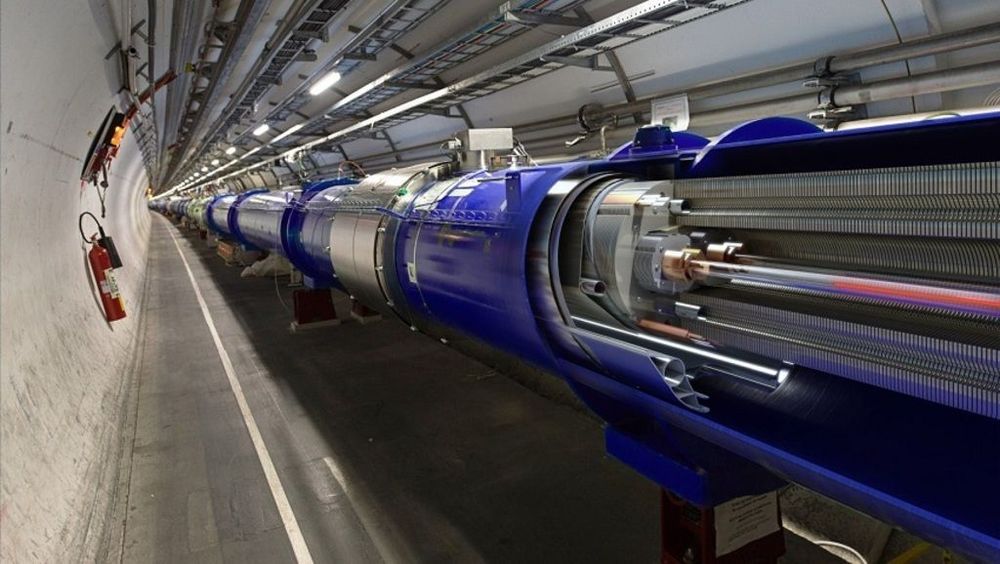

Higgs boson laser.
Electroweak processes in high-energy lepton collisions are considered in a situation where the incident center-of-mass energy lies below the reaction threshold, but is boosted to the required level by subsequent laser acceleration. Within the framework of laser-dressed quantum field theory, we study the laser-boosted process $\ell^+ \ell^- \to HZ^0$ in detail and specify the technical demands needed for its experimental realization. Further, we outline possible qualitative differences to field-free processes regarding the detection of the produced Higgs bosons.
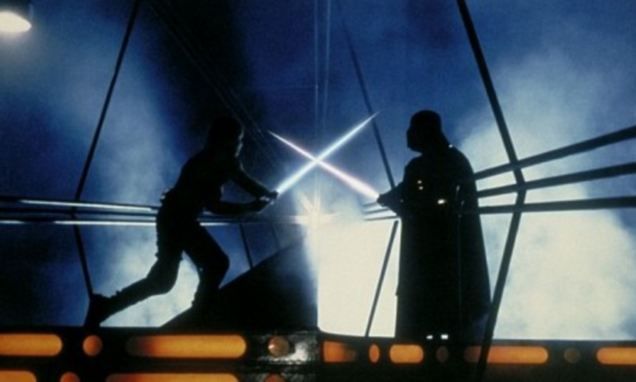
Scientists have accidentally discovered a completely new form of matter that works in the same way as the lightsabers used in Star Wars.
A team of physicists were messing around with photons when they managed to get the particles to stick together and form a molecule.
The molecule behaves, they claim, just like a lightsaber by moving the light particles around in a solid mass and is unlike any matter seen before.

The plaintiffs have sought $20 trillion, which is a bigger amount than China’s GDP, claiming coronavirus is the result of a biological weapon prepared by the Chinese authorities.
They have accused China of aiding and abetting death, provision of material support to terrorists, conspiracy to cause injury and death of US citizens, negligence, wrongful death, and assault and battery.
Also read: Coronavirus impact: India to produce hazmat suits locally as global suppliers say no.
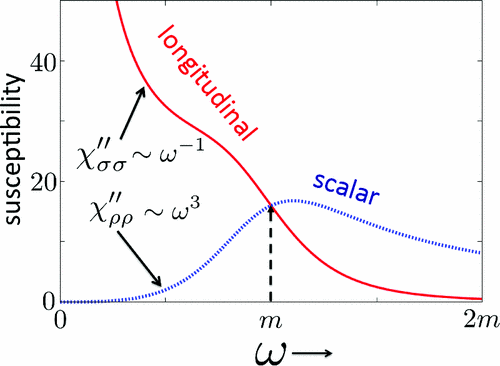
The amplitude mode is a ubiquitous collective excitation in condensed-matter systems with broken continuous symmetry. It is expected in antiferromagnets, short coherence length superconductors, charge density waves, and lattice Bose condensates. Its detection is a valuable test of the corresponding field theory, and its mass gap measures the proximity to a quantum critical point. However, since the amplitude mode can decay into low-energy Goldstone modes, its experimental visibility has been questioned. Here we show that the visibility depends on the symmetry of the measured susceptibility. The longitudinal susceptibility diverges at low frequency as Im χ σ σ ∼ ω − 1 (d = 2) or log (1 / | ω |) (d = 3), which can completely obscure the amplitude peak. In contrast, the scalar susceptibility is suppressed by four extra powers of frequency, exposing the amplitude peak throughout the ordered phase. We discuss experimental setups for measuring the scalar susceptibility. The conductivity of the O (2 ) theory (relativistic superfluid) is a scalar response and therefore exhibits suppressed absorption below the Higgs mass threshold, σ ∼ ω 2 d + 1. In layered, short coherence length superconductors, (relevant, e.g., to cuprates) this threshold is raised by the interlayer plasma frequency.
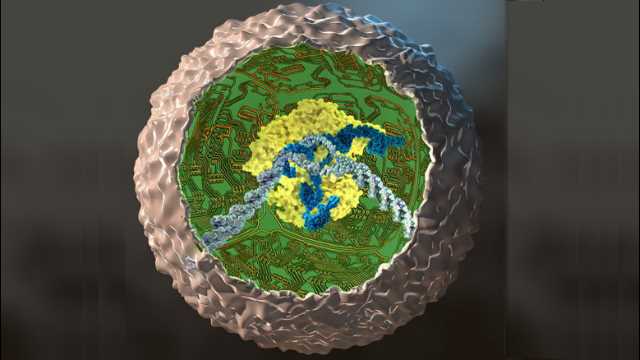
Using new gene-editing technology, researchers have rewired mouse stem cells to fight inflammation caused by arthritis and other chronic conditions. Such stem cells, known as SMART cells (Stem cells Modified for Autonomous Regenerative Therapy), develop into cartilage cells that produce a biologic anti-inflammatory drug that, ideally, will replace arthritic cartilage and simultaneously protect joints and other tissues from damage that occurs with chronic inflammation.
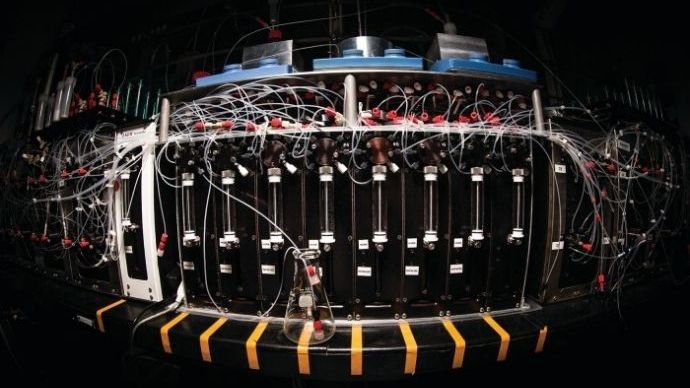
A new automated machine can synthesize a range of small organic molecules with the push of a button. The synthesizer uses a chemical method that pieces together molecules from modular building blocks. With this technique, the machine synthesized 14 classes of molecules, including some complicated ones with multiple rings.
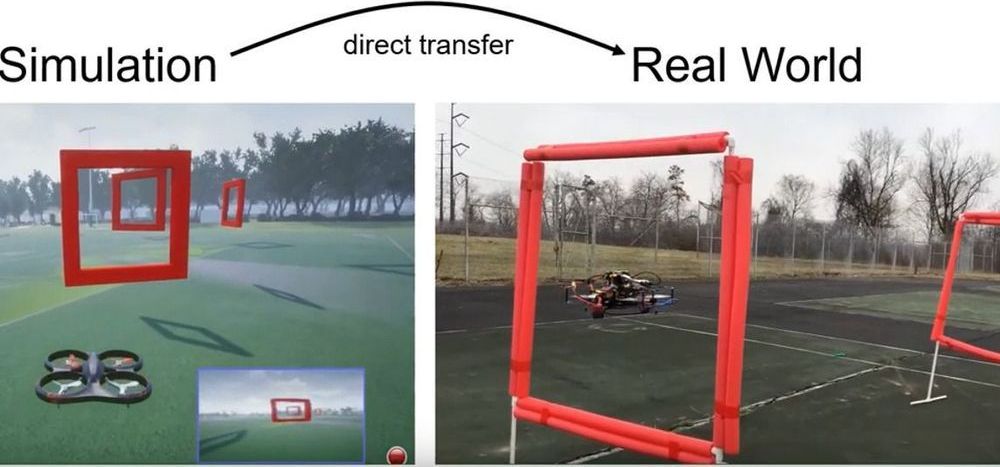
Perception-Action loops are at the core of most our daily life activities. Subconsciously, our brains use sensory inputs to trigger specific motor actions in real time and this becomes a continuous activity that in all sorts of activities from playing sports to watching TV. In the context of artificial intelligence(AI), perception-action loops are the cornerstone of autonomous systems such as self-driving vehicles. While disciplines such as imitation learning or reinforcement learning have certainly made progress in this area, the current generation of autonomous systems are still nowhere near human skill in making those decisions directly from visual data. Recently, AI researchers from Microsoft published a paper proposing a transfer learning method to learn perception-action policies from in a simulated environment and apply the knowledge to fly an autonomous drone.
The challenge of learning which actions to take based on sensory input is not so much related to theory as to practical implementations. In recent years, methods like reinforcement learning and imitation learning have shown tremendous promise in this area but they remain constrained by the need of large amounts of difficult-to-collect labeled real world data. Simulated data, on the other hand, is easy to generate, but generally does not render safe behaviors in diverse real-life scenarios. Being able to learn policies in simulated environments and extrapolate the knowledge to real world environments remains one of the main challenges of autonomous systems. To advance research in this area, the AI community has created many benchmarks for real world autonomous systems. One of the most challenging is known as first person view drone racing.
In first-person view(FPV) done racing, expert pilots are able to plan and control a quadrotor with high agility using a potentially noisy monocular camera feed, without comprising safety. The Microsoft Research team attempted to build an autonomous agent that can control a drone in FPV racing.
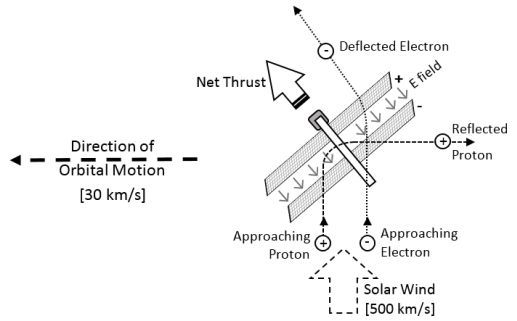
Electric dipole propulsion bigsmile
One reason we look so often at sail technologies in these pages is that they offer us ways of leaving the propellant behind. But even as we enter the early days of solar sail experimentation in space, we look toward ways of improving them by somehow getting around their need for solar photons. Robert Zubrin’s work with Dana Andrews has helped us see how so-called magnetic sails (magsails) could be used to decelerate a craft as it moved into a destination system. Now Zubrin looks at moving beyond both this and solar wind-deflecting electric sails toward an ingenious propellantless solution. Zubrin presented the work at last April’s Breakthrough Discuss meeting, and today he fills us in on its principles and advantages. Read on for a look at a form of enhanced electric sail the author has christened the Dipole Drive.
by Robert Zubrin
The dipole drive is a new propulsion system which uses ambient space plasma as propellant, thereby avoiding the need to carry any of its own. The dipole drive remedies two shortcomings of the classic electric sail in that it can generate thrust within planetary magnetospheres and it can generate thrust in any direction in interplanetary space. In contrast to the single positively charged screen employed by the electric sail, the dipole drive is constructed from two parallel screens, one charged positive, the other negative, creating an electric field between them with no significant field outside. Ambient solar wind protons entering the dipole drive field from the negative screen side are reflected out, with the angle of incidence equaling the angle of reflection, thereby providing lift if the screen is placed at an angle to the plasma wind. If the screen is perpendicular to the solar wind, only drag is generated but the amount is double that of electric sail of the same area.

I have not been a supporter of an extended public quarantine or shut down, if any. There are a number of reasons why (governments steal liberty during such times; national debt increases and is used to the point of total socialism; inequality becomes permanent; etc), but in this letter below to everyone I want to talk specifically about why a quarantine is ultimately harming the life extension and #transhumanism movements. Don’t ever forget, we are in a race to save the lives of “everyone” right now with the plague of aging, not just those who might get #coronavirus.
Dear Fellow Humans.
If you believe in the life extension movement of trying to live indefinitely through science and technology, then you likely should not support the worldwide quarantine (at least don’t support it over 14 days in the West where we don’t have the ability to do it as efficiently as Asia). It’s horrible that so many lives will be lost by COVID-19, but in a worse-case scenario it’s likely 100 million people will die globally (mostly older people who have only a few years left to live due to their underlying medical conditions of aging — and who have likely been kept alive due to science and 21st Century medicine anyway). But the damage we could cause (and almost certainly are causing) with the quarantine and shut down to the US and global economy may cost the life extension movement and its scientific research possibly three to five years of progress — because the funding, projects, and jobs around the anti-aging industry will disappear for a notable time. The math shows that if we achieve indefinite lifespans for the human race by the year 2035 vs 2040, approximately 250 million lives will be spared and could then go on indefinitely. The aging math (or life hours) for any transhumanist shows that if we care about human life and longevity — about how long people alive today live — then we should not quarantine the world right now, but get the economy going again as a first priority so that we may fund the future of anti-aging science for the species. Some of us call this reasoning the Transhumanist Wager. For the sake of everyone alive today, it must be acknowledged that there is a dramatically larger percent gain (many thousands of percent) of overall life years for our species by not quarantining and shutting down the world. This is all a horrible scenario, and one I am terribly sad to share with you, but that doesn’t mean we should cower from facts. We owe our species the most courageous decision for its long-term longevity of all its living citizens.
Live long and prosper, Zoltan Istvan
*****